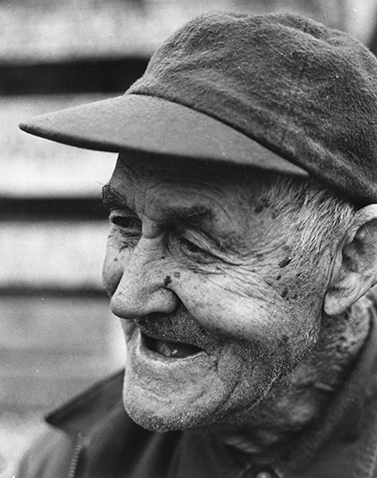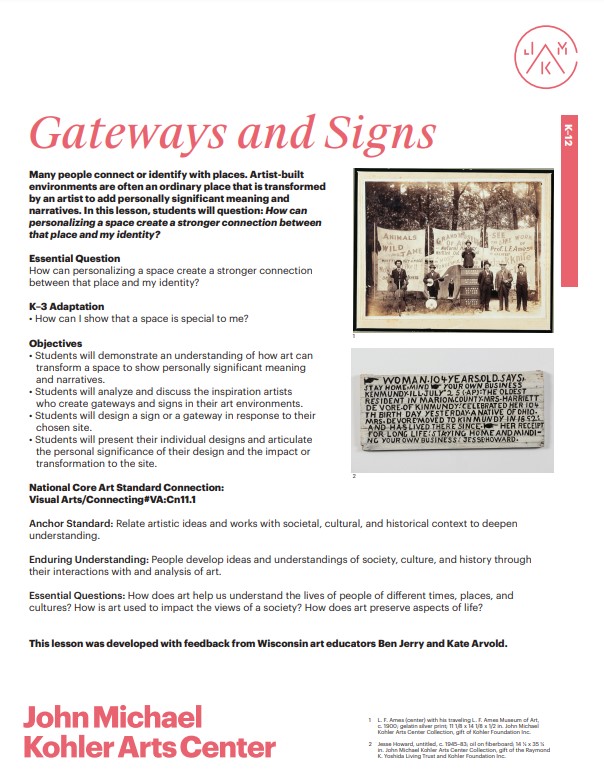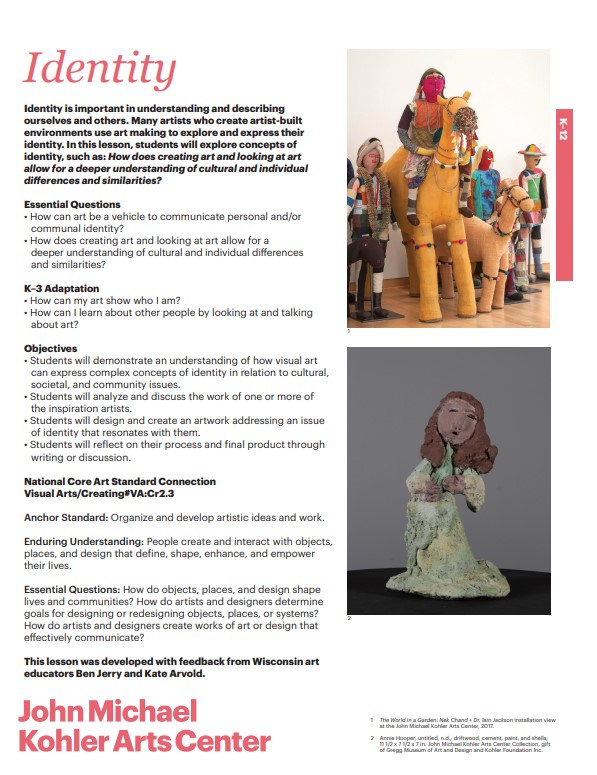Jesse Howard Education Resources

Jesse Howard was known for covering his property in Fulton, Missouri, with hundreds of painted signs. Known as “Sorehead Hill,” the site contained signs that explained Howard’s daily experiences and views of the world, such as interpretations of biblical verses, commentary on local and national politicians, and disapproval of people who stole his signs.
While many local residents disliked the site, newspaper reporters, artists, and art historians at universities took notice of it. By 1968, Howard’s signs were featured in Gregg Blasdel’s Art in America essay, “The Grass Roots Artist,” on art environments in the United States, and later, in exhibitions at the Walker Art Center in Minneapolis and Philadelphia College of Art. In the 1970s, the Kansas City Art Institute purchased several works by Howard, and later became the steward of his signs after he passed away in 1983.
In 2016, the Kansas City Art Institute, in partnership with Kohler Foundation, Inc., transferred 187 objects from its Jesse Howard collection to the Arts Center. These objects, including eighty signs, six mixed-media sculptures, and more than fifty archival documents, joined the twelve signs already in the Arts Center’s collection.








